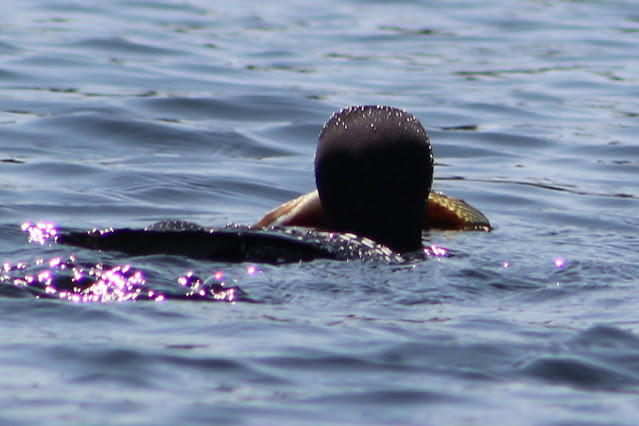A stretch of cool, damp weather is just what ferns and other wetland-dwelling plants love, so they were in their element this week.
 |
| Cinnamon Fern (Osmundastrum cinnamomeum) |
The cinnamon fern is identifiable by its distinctive cinnamon-colored central fronds that grow straight up, surrounded by large green fronds, both of which can grow up to five feet high in fertile wetlands. When these ferns emerge in spring as fiddleheads they resemble the edible ostrich fern, but cinnamon fiddleheads have a white, fuzzy covering over them.
 |
| Don't eat fiddleheads that have this white, fuzzy covering. |
In comparison, ostrich ferns have a thin, brown, papery covering. Even the edible ostrich fern can contain toxins, but not enough to cause problems. The cinnamon fern has sufficient toxins that if eaten can cause nausea and other symptoms.
The Jack-in-the-Pulpit is often found in cultivated gardens, but it also grows wild in the Lakes Region. I found this one at the edge of a drainage ditch along a dirt road. It took me a minute to figure out why it didn't look quite right: its leaves had been chomped off by a deer.
 |
| Jack-in-the-pulpit (Arisaema triphyllum) Note the bare stalks where the leaves have been eaten off the top. |
Another plant that favors cool and damp is the false Soloman's seal.
 |
| False Soloman's Seal (Maianthemum racemosum) |
Later in the summer the pretty white flowers will produce deep-red berries which are edible, but with a large pit and little flesh, they're not worth much more than a sample of one or two as you pass them by.
One more spring flower blooming now is the bluebead lily.
These will have large, blue berries in mid-summer, but they are not edible.
Thanks to Amy Wilson's good eye, we finally confirmed that the female of the loon pair that nests in Harris Cove has returned. Reports are that the pair continues to poke around the islands looking for a safe place to build a nest but still hasn't settled on a site. The Loon Preservation Committee biologist visited Wicwas again this week and confirmed that all is well on the northern nest.
One of the Harris Cove loons caught itself a really nice meal one morning.
 |
| A fish this size might be a whole meal. |
It had to spend several minutes beating it up enough to dare to swallow it.
 |
| A loon doesn't want a fish this large flailing around in its gullet. |
It looks to me like the fish was a black crappie.
That's a favorite pan fish for humans too!




























